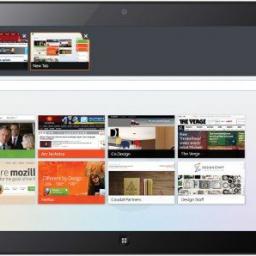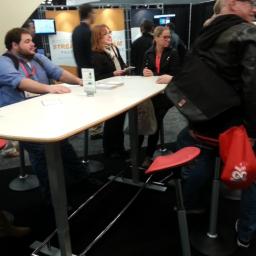Remember the first time you heard about Google's
Summer of Code ? Well, time flies:
Google's well-liked summer coding internship program is celebrating its 10th year. And it's got a lot to be proud of.
What is likely to remain the same this year is the overwhelming response from students from all over the world who want the chance to work on free and open source projects with mentoring organizations that Google has hand-picked. Carol Smith, Open Source Programs Manager at Google, tells us that to date GSoC students have helped generate over 50 million lines of open source code to date, from over 8,500 student developers.
Previous summers of code have helped the KDE and FreeBSD projects advance in useful and significant ways, and it's brought a huge number of young programmers into the open source ecosystem, a good thing by any measure. Here's hoping the next ten years of the Summer of Code lead us to bold and interesting places! Or at least help us build the tools that enable us to avoid the robot apocalypse. Whichever.
A recent
Nature Podcast (
Radio Signals
) features a new type of optical amplifier which converts faint radio signals
directly into laser light . The novel approach shows promise with greatly reduced noise and improved sensitivity.
Radio waves are used for many measurements and applications, for example, in communication with mobile phones, MRI scans, scientific experiments and cosmic observations. But 'noise' in the detector of the measuring instrument limits how sensitive and precise the measurements can be. Now researchers at the Niels Bohr Institute have developed a new method where they can avoid noise by means of laser light and can therefore achieve extreme precision of measurements.
We have developed a detector that does not need to be cooled down, but which can operate at room temperature and yet hardly has any thermal noise. The only noise that fundamentally remains is so-called quantum noise, which is the minimal fluctuations of the laser light itself. ... This membrane is an extremely good oscillator and that is why it is so ultrasensitive. At room temperature, it works as effectively as if it was cooled down to minus 271 C and we are working to get it even closer to minus 273 degrees C, which is the absolute minimum. In addition, it is a huge advantage to use optical detection, as instead of using ordinary copper wires to transmit the signal, you can use fiber optic cables, where there is no energy loss,
explains Eugene Polzik, Professor and Head of the research center Quantop at the Niels Bohr Institute at the University of Copenhagen.
Could this be the start of a new era of ultra-sensitive devices, or low-cost/high energy technology?

Windows 8's unique "metro" interface has required developers to spend a lot of time updating their software to fit into the new environment. And the folks at Mozilla have decided it's not worth their time. They've
dropped support for the project that aimed to bang Firefox into shape for Windows 8, citing lack of demand for the product as the reason. That frees up developers to spend time doing other things, but leaves users with good old Internet Explorer as their primary browser option on the tiled interface.
Mozilla says millions of users have downloaded pre-release builds of the desktop version of Firefox, while fewer than 1000 seem to be actively using the pre-release of Firefox for Windows 8 Metro. If you were holding out for the release version, time to look for other options!
A team of Harvard researchers showed that the commonly found bacterium Rhodopseudomonas palustris can use
natural conductivity to pull electrons from minerals located remotely in soil and sediment while remaining at the surface, where they absorb the sunlight needed to produce energy.
Led by Peter Girguis, a team of researchers showed that the commonly found bacterium Rhodopseudomonas palustris can use natural conductivity to pull electrons from minerals located deep in soil and sediment while remaining at the surface, where they absorb the sunlight needed to produce energy.
"When you think about electricity and living organisms, most people default to Mary Shelley's Frankenstein, but we've long understood that all organisms actually use electrons - what constitutes electricity - to do work," Girguis said. "At the heart of this paper is a process called extracellular electron transfer (EET), which involves moving electrons in and out of cells. What we were able to show is that these microbes take up electricity, which goes into their central metabolism, and we were able to describe some of the systems that are involved in that process."
This week's poll is an example of the
Approval voting method. Note that the items are checkboxes instead of the traditional single choice radio button. Please check all the features that you would prefer to see on this site sooner-rather-than-later. I plan on adding all of these features (except the NSA option - that one is a joke!) over the next few weeks. This poll will give me some feedback on which features are the most popular. For example, if nobody really cares about the Achievement system, I'll know to not spend too much time on it.

Dicephalic parapagus twins, or a single body with two heads, were
born in India on March 12th. India.com reports
"the twins have a slim chance of survival even after they are operated upon" and the parents have yet to name their conjoined daughters. [It] may not be possible to separate the twins because they share the same body. "The baby girl has two heads, two necks and two spines, but only one body, one lung for each head, two separate oesophaguses and trachea, a single stomach and heart. Most of the vital organs are shared," said Dr Amit Gupta, medical director of Sonepat's Cygnus JK Hindu Hospital, where the conjoined twins were born.
The parents are poor and did not have an ultrasound until the last trimester.
"It was on February 24 that the patient came to meet me and was into her 8th month of pregnancy. The mother had not gone through any tests earlier as she couldn't afford an ultrasound test. And it was then we broke the news to the family that there are conjoined twins to be born, and that their babies hadn't completely separated" gynaecologist Dr Shikha Malik said.
While having a single set of organs for conjoined twins does put more strain on the body, there are examples of thriving dicephalic parapagus twins, such as
Abby and Brittany Hensel. The pair, now age 24, had a reality show on US TV channel TLC in 2012.

From the Washington Post:
U.S. officials announced plans Friday to relinquish federal government control over the administration of the Internet, a move that pleased international critics but alarmed some business leaders and others who rely on the smooth functioning of the Web.
Pressure to let go of the final vestiges of U.S. authority over the system of Web addresses and domain names that organize the Internet has been building for more than a decade and was supercharged by the backlash last year to revelations about National Security Agency surveillance.
The change would end the long-running contract between the Commerce Department and the Internet Corporation for Assigned Names and Numbers (ICANN), a California-based nonprofit group. That contract is set to expire next year but could be extended if the transition plan is not complete.
The announcement will move control of the authoritative root zone file, while ICANN
will be moving toward multi-stakeholder control instead of the previous US exclusive control.

First it was ergonomic keyboards and mice, then ergonomic keyboard trays and lumbar-support chairs. Standing desks came next, and as XKCD points out,
we're not done yet. No surprise then, that the SXSW event led to display of some new ideas,
such as Martin Keen's new Leaning chair, basically a repurposed tractor seat posted at an angle.
How do you stay comfortable for the 23.5 hours that you are parked in front of a computer? And with all this ergonomic stuff,
when will the madness end?
Across the country, math geeks in museums, schools, private groups and elsewhere gather to
celebrate the number pi, approximately 3.14. That's why March 14 -- 3-14 -- is
Pi Day. What's more, Albert Einstein was born on this day.
Throughout history, people have been captivated by this number because there is no way to calculate it exactly by a simple division on your calculator. What's more, its digits go on infinitely, without any pattern in the numbers. 3.1415926535897932 ... etc. Even that many digits are more than most people would need for everyday use, but some folks have been inspired to memorize thousands of digits of pi, or even use the digits to create poetry or music.
If you want to go where the day is said to be "invented," look no further than
San Francisco's Exploratorium. Larry Shaw, who worked in the electronics group at the museum, began the tradition in 1988. Last year was Pi Day's 25th anniversary there.





